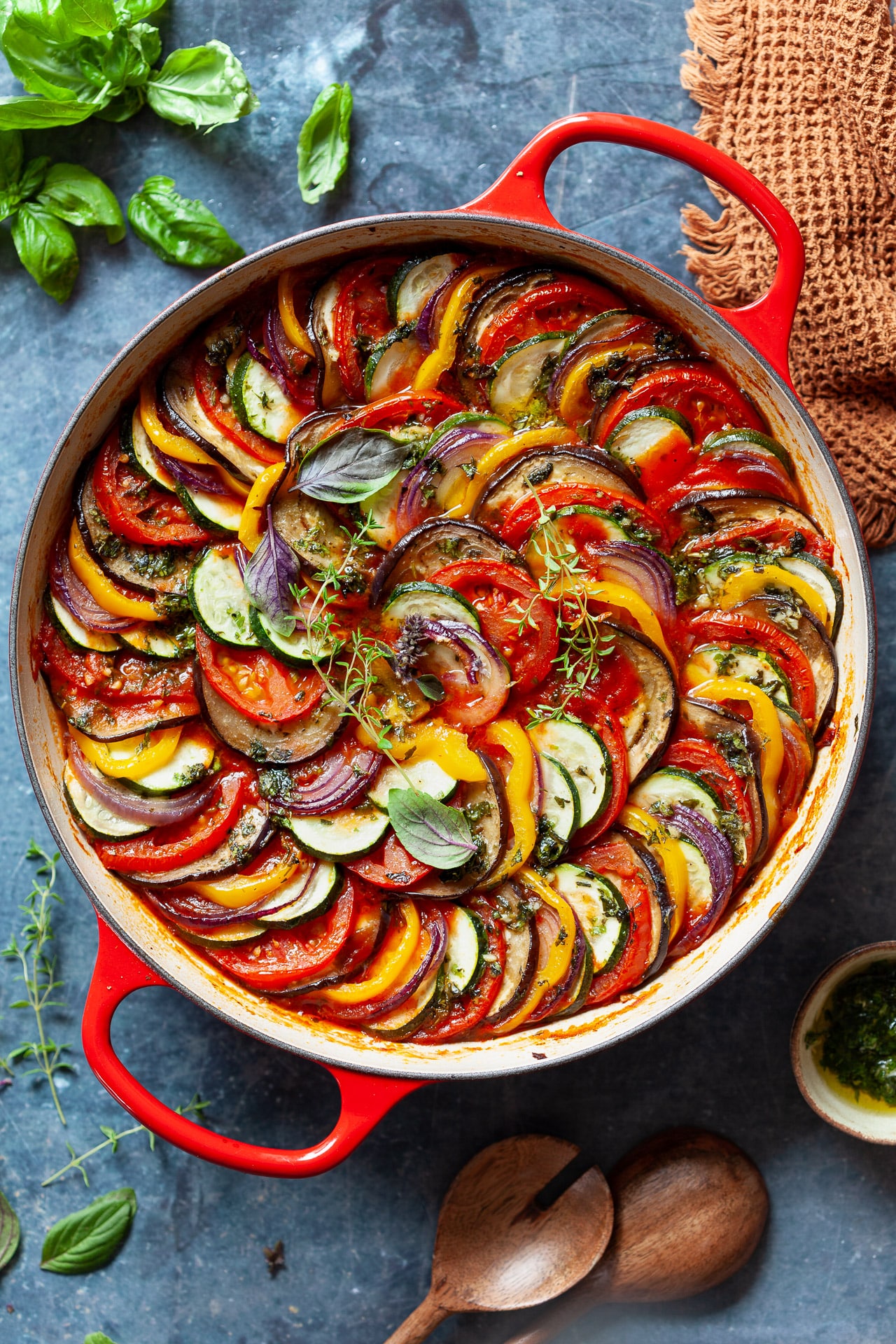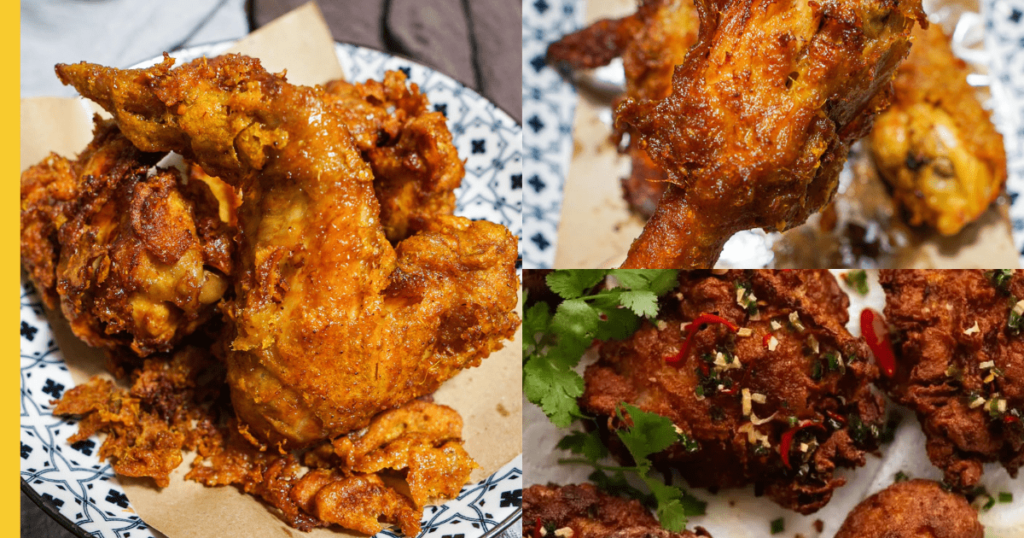Recipes: How to Make Traditional Indian Butter Chicken at Home
Embark on a culinary journey through Recipes: How to Make Traditional Indian Butter Chicken at Home and its flavors.
Related Recipes
- A Journey Through The Flavors Of Curry Laksa: From Humble Beginnings To Culinary Masterpiece
- A Journey Into The Spicy World Of Chicken Jalfrezi: From Humble Origins To Culinary Mastery
- Tostada: A Culinary Journey Through Mexico
- Gado-Gado: A Symphony Of Flavors In A Salad Bowl
- A Dive Into The Delectable World Of Moules-Frites: Belgium’s National Treasure
Ingredients, Prep, Preparation Tips
Recipes: How to Make Traditional Indian Butter Chicken at Home

Butter chicken, or Murgh Makhani, is arguably one of India’s most beloved dishes. Its creamy, rich tomato-based sauce, infused with fragrant spices and tender, succulent chicken, is a culinary masterpiece that transcends cultural boundaries. While many restaurants boast their versions, achieving that perfect balance of sweet, savory, spicy, and tangy at home can feel daunting. This comprehensive guide will demystify the process, leading you step-by-step to crafting your own authentic, restaurant-quality butter chicken.
I. Ingredients: The Foundation of Flavor
The magic of butter chicken lies in the quality and precise measurement of its ingredients. Don’t be tempted to substitute; each component plays a crucial role in the final flavor profile.
A. For the Chicken Marinade:
- 1.5 lbs boneless, skinless chicken thighs: Chicken thighs are more forgiving than breasts and stay juicier during cooking. Cut into 1-inch pieces.
- 1 cup plain yogurt: Full-fat yogurt adds richness and helps tenderize the chicken. Greek yogurt can be substituted, but it might result in a slightly drier final product.
- 2 tbsp ginger-garlic paste: Freshly made is best, but store-bought works in a pinch.
- 2 tbsp lemon juice: Adds brightness and helps tenderize.
- 1 tbsp garam masala: A complex blend of ground spices, the heart of Indian cooking. Use a high-quality pre-made blend or create your own (see recipe variation section).
- 1 tbsp paprika: Adds warmth and color.
- 1 tsp turmeric powder: Adds a vibrant yellow color and subtle earthy flavor.
- 1 tsp red chili powder: Adjust to your spice preference. Kashmiri chili powder provides color without much heat.
- 1 tsp coriander powder: Earthy and slightly citrusy.
- 1 tsp cumin powder: Warm and slightly bitter.
- ½ tsp black pepper: Adds a subtle bite.
- 1 tsp salt: Or to taste.
- 2 tbsp oil: For even browning.
![[Detailed step image for TITLE]](https://i1.wp.com/mykitchenlittle.com/wp-content/uploads/2021/02/Quick-and-Easy-Indian-Butter-Chicken-8.jpeg?w=1756u0026ssl=1)
B. For the Sauce:
- 1 large onion, finely chopped: Forms the base of the sauce.
- 2 tbsp ginger-garlic paste: Reinforces the flavor base.
- 1 (28 oz) can crushed tomatoes: Provides the body and tanginess of the sauce.
- 1 (14.5 oz) can diced tomatoes, undrained: Adds texture and juice.
- 1 cup heavy cream: Provides the creamy richness.
- ½ cup butter: Unsalted is preferred, allowing you to control the salt level.
- 2 tbsp tomato paste: Adds depth of flavor and richness.
- 1 tbsp garam masala: Enhances the spice profile.
- 1 tsp chili powder: Adjust to your preference.
- 1 tsp coriander powder: Complements the other spices.
- ½ tsp cumin powder: Adds warmth and depth.
- ½ tsp turmeric powder: Adds color and subtle flavor.
- ½ cup water: Adjust as needed for desired consistency.
- 2 tbsp cashew paste (optional): Adds richness and creaminess. Soak cashews in hot water for at least 30 minutes before blending.
- Salt and sugar to taste: Balance the flavors.
- Fresh cilantro, chopped (for garnish): Adds freshness and vibrancy.
![[Additional presentation of TITLE]](https://saltandbaker.com/wp-content/uploads/2019/12/Indian-Butter-Chicken-9.jpg)
II. Preparation Advice: Setting the Stage for Success
Proper preparation is key to a successful butter chicken recipe. Here are some tips:
- Marinate the chicken for at least 4 hours, preferably overnight: This allows the flavors to penetrate the chicken, resulting in a more tender and flavorful final product.
- Use fresh ingredients whenever possible: Fresh ginger, garlic, and herbs will significantly enhance the flavor of the dish.
- Adjust the spice level to your preference: Start with less chili powder and add more gradually until you achieve your desired heat.
- Prepare the cashew paste (if using) ahead of time: Soaking the cashews ensures a smooth and creamy paste.
- Mise en place: Prepare all your ingredients before you begin cooking. This will streamline the cooking process and prevent any last-minute scrambling.
III. Cooking Instructions: A Step-by-Step Guide
This section details the cooking process, breaking it down into manageable steps.
A. Marinating the Chicken:
- In a large bowl, combine all the marinade ingredients (yogurt, ginger-garlic paste, lemon juice, garam masala, paprika, turmeric, chili powder, coriander powder, cumin powder, black pepper, and salt).
- Add the chicken pieces and mix well, ensuring each piece is coated evenly.
- Cover the bowl and refrigerate for at least 4 hours, or preferably overnight.
B. Cooking the Chicken:
- Heat the oil in a large skillet or pan over medium-high heat.
- Add the marinated chicken pieces and cook until browned on all sides. Avoid overcrowding the pan; work in batches if necessary.
- Remove the chicken from the pan and set aside.
C. Making the Sauce:
- In the same pan, add the chopped onions and sauté until golden brown.
- Add the ginger-garlic paste and sauté for another minute until fragrant.
- Add the crushed tomatoes, diced tomatoes, tomato paste, garam masala, chili powder, coriander powder, cumin powder, and turmeric powder.
- Stir well and bring to a simmer. Reduce the heat to low and cook for 15-20 minutes, stirring occasionally, until the sauce has thickened slightly.
- If using cashew paste, stir it in now.
- Add the cooked chicken back to the pan.
- Stir in the heavy cream and butter. Simmer for another 5-10 minutes, allowing the flavors to meld.
- Season with salt and sugar to taste. Adjust the consistency by adding water if needed.
D. Serving:
- Garnish with fresh cilantro.
- Serve hot with naan bread, rice, or roti.
IV. Step-by-Step Visual Guide (Imagine images here)
(This section would ideally contain a series of high-quality photographs illustrating each step of the recipe. Due to the limitations of this text-based format, I cannot include images. Imagine pictures depicting each step from marinating the chicken to garnishing the finished dish.)
V. Professional Advice: Tips from Experienced Chefs
- Don’t rush the cooking process: Allowing the sauce to simmer gently for a longer time develops a richer, more complex flavor.
- Taste and adjust the seasoning as you go: This is crucial for achieving the perfect balance of sweet, savory, spicy, and tangy.
- Use good quality spices: The quality of your spices will significantly impact the final flavor of the dish.
- Don’t be afraid to experiment: Once you’ve mastered the basic recipe, feel free to experiment with different variations.
VI. Recipe Variations: Exploring Different Flavors
- Spicy Butter Chicken: Increase the amount of chili powder to your liking. Add a pinch of cayenne pepper for extra heat.
- Creamy Butter Chicken: Add more heavy cream or cashew paste for an even richer and creamier sauce.
- Vegan Butter Chicken: Substitute the chicken with paneer (Indian cheese) or firm tofu. Use vegan butter and cream.
- Garam Masala Variation: Experiment with different garam masala blends or create your own by combining ground cinnamon, cloves, cardamom, black peppercorns, nutmeg, and cumin seeds.
VII. Nutrition & Serving Ideas: A Balanced Approach
A single serving of butter chicken (without rice or naan) contains approximately:
- Calories: 400-500 (depending on ingredients and portion size)
- Protein: 30-40g
- Fat: 25-35g
- Carbohydrates: 10-15g
Serving Suggestions:
- Naan bread: A classic accompaniment, perfect for scooping up the sauce.
- Basmati rice: A fragrant and fluffy rice that complements the rich flavors of the butter chicken.
- Roti: A flatbread made from whole wheat flour.
- Raita: A cooling yogurt-based side dish that balances the richness of the butter chicken.
- Salad: A simple green salad adds freshness and lightness to the meal.
VIII. Serving Advice: Presentation Matters
Presentation can significantly enhance the dining experience. Serve your butter chicken in a warm bowl, garnished with fresh cilantro. Consider arranging the chicken pieces artfully in the sauce. Serve with warm naan bread or rice on the side. A simple but elegant presentation will elevate your home-cooked butter chicken to a restaurant-worthy experience. The aroma alone will tantalize your guests! Enjoy the process and savor the delicious results of your culinary efforts. Happy cooking!
Thank you for exploring Recipes: How to Make Traditional Indian Butter Chicken at Home with us! We hope this guide brought you new insights and inspiration for your cooking journey. Share your thoughts in the comments below or try out another recipe for further culinary exploration!





